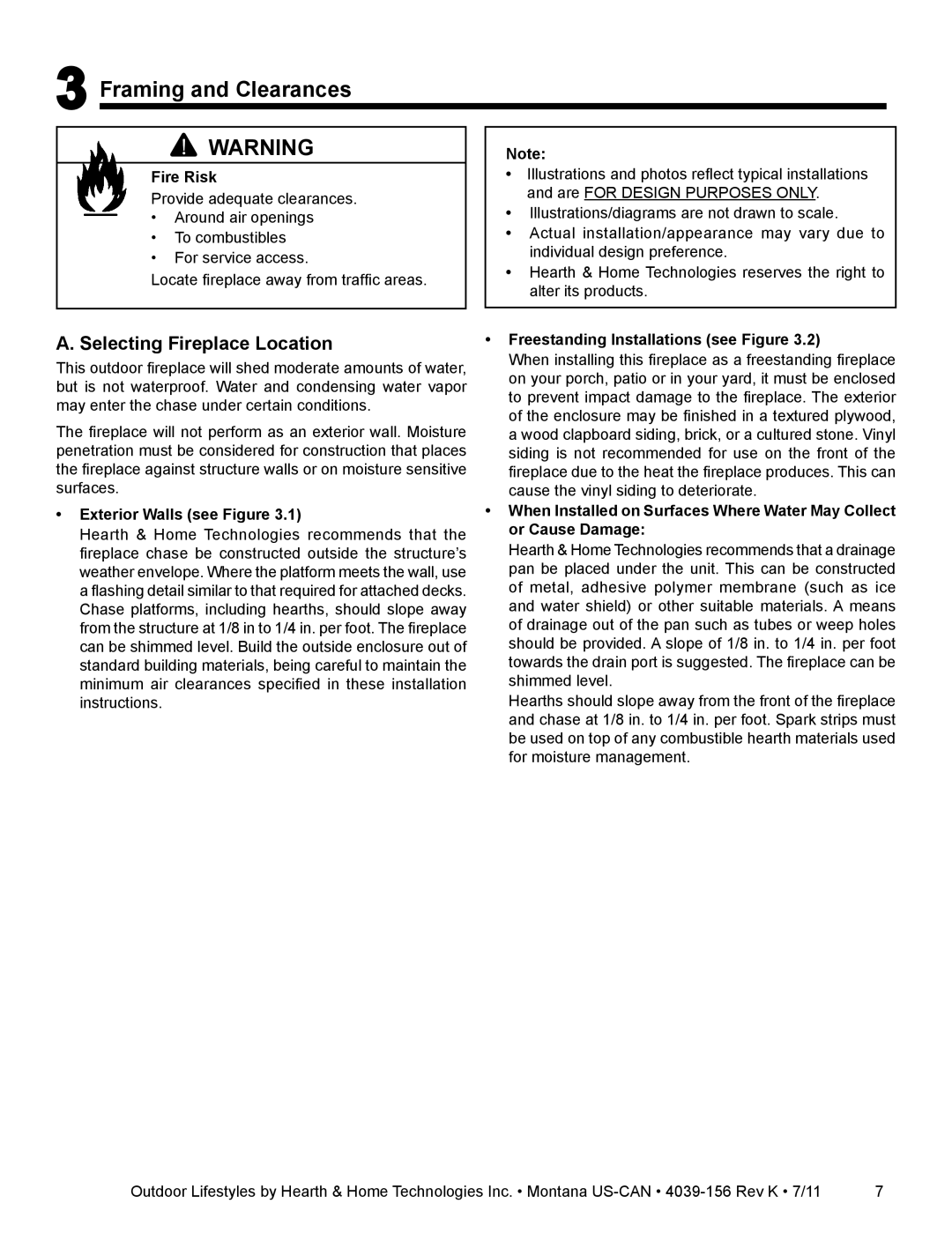
3Framing and Clearances
| WARNING |
| Note: |
Fire Risk |
| • Illustrations and photos reflect typical installations | |
Provide adequate clearances. |
| and are FOR DESIGN PURPOSES ONLY. | |
| • Illustrations/diagrams are not drawn to scale. | ||
• | Around air openings |
| |
• | To combustibles |
| • Actual installation/appearance may vary due to |
• | For service access. |
| individual design preference. |
| • Hearth & Home Technologies reserves the right to | ||
Locate fireplace away from traffic areas. |
| ||
| alter its products. | ||
|
|
| |
|
|
|
|
A. Selecting Fireplace Location
This outdoor fireplace will shed moderate amounts of water, but is not waterproof. Water and condensing water vapor may enter the chase under certain conditions.
The fireplace will not perform as an exterior wall. Moisture penetration must be considered for construction that places the fireplace against structure walls or on moisture sensitive surfaces.
•Exterior Walls (see Figure 3.1)
Hearth & Home Technologies recommends that the fireplace chase be constructed outside the structure’s weather envelope. Where the platform meets the wall, use a flashing detail similar to that required for attached decks. Chase platforms, including hearths, should slope away from the structure at 1/8 in to 1/4 in. per foot. The fireplace can be shimmed level. Build the outside enclosure out of standard building materials, being careful to maintain the minimum air clearances specified in these installation instructions.
•Freestanding Installations (see Figure 3.2)
When installing this fireplace as a freestanding fireplace on your porch, patio or in your yard, it must be enclosed to prevent impact damage to the fireplace. The exterior of the enclosure may be finished in a textured plywood, a wood clapboard siding, brick, or a cultured stone. Vinyl siding is not recommended for use on the front of the fireplace due to the heat the fireplace produces. This can cause the vinyl siding to deteriorate.
•When Installed on Surfaces Where Water May Collect or Cause Damage:
Hearth & Home Technologies recommends that a drainage pan be placed under the unit. This can be constructed of metal, adhesive polymer membrane (such as ice and water shield) or other suitable materials. A means of drainage out of the pan such as tubes or weep holes should be provided. A slope of 1/8 in. to 1/4 in. per foot towards the drain port is suggested. The fireplace can be shimmed level.
Hearths should slope away from the front of the fireplace and chase at 1/8 in. to 1/4 in. per foot. Spark strips must be used on top of any combustible hearth materials used for moisture management.
Outdoor Lifestyles by Hearth & Home Technologies Inc. • Montana | 7 |
